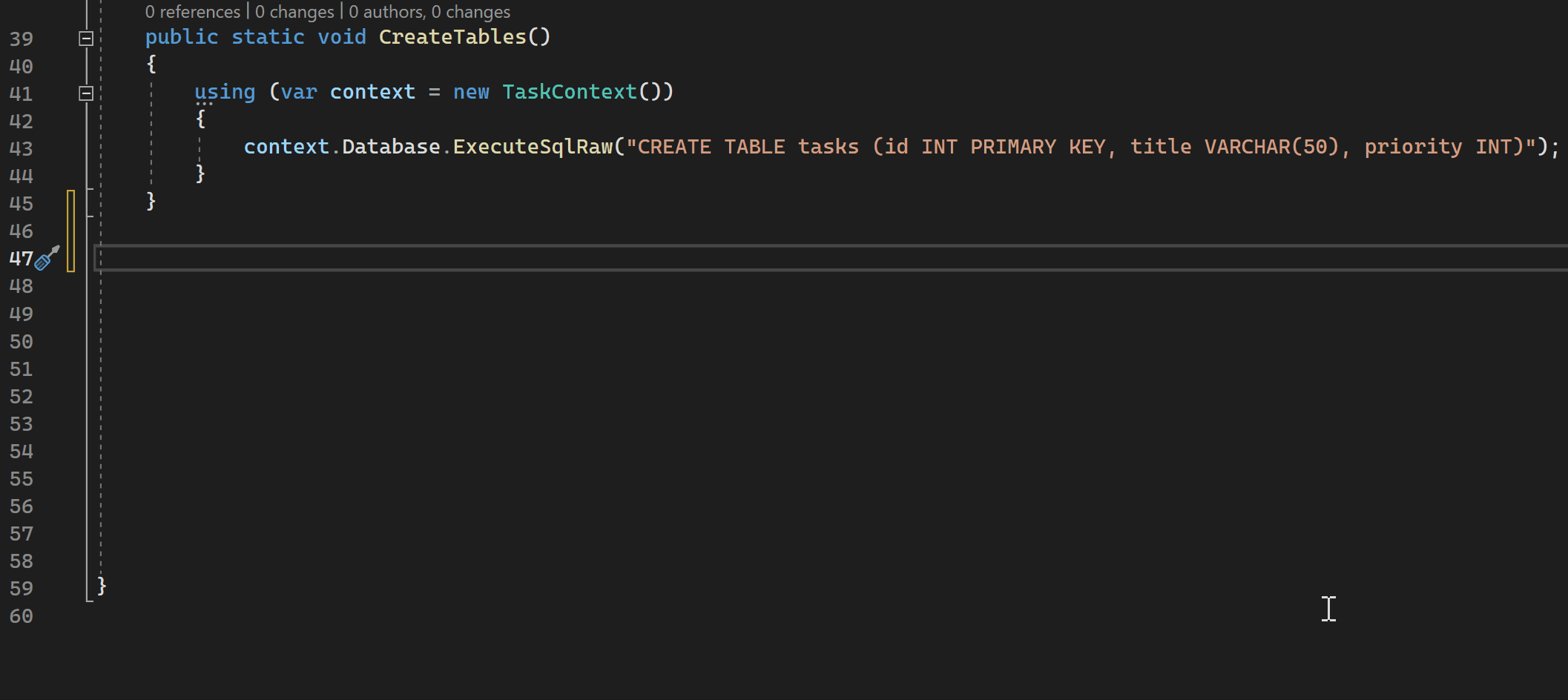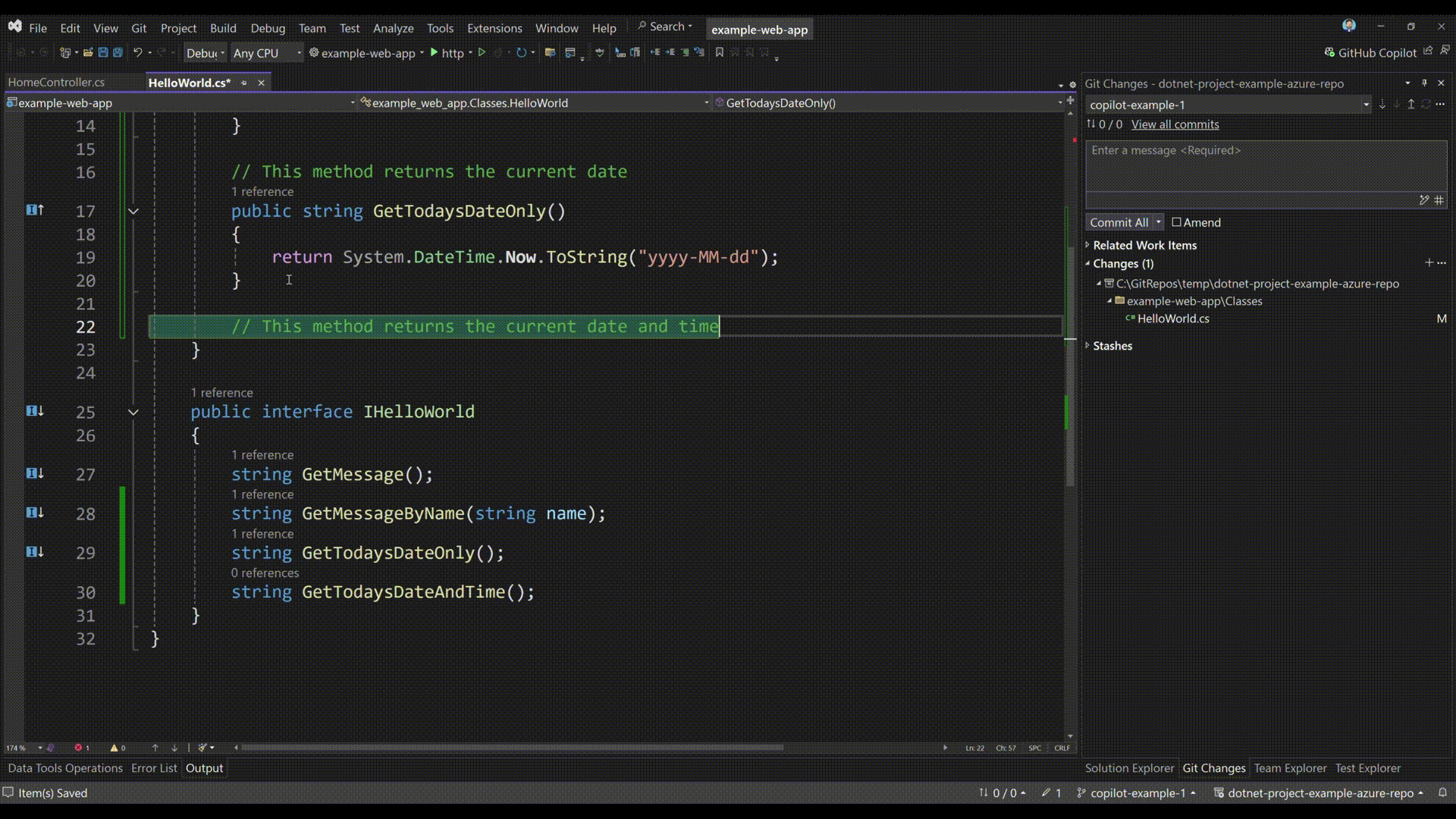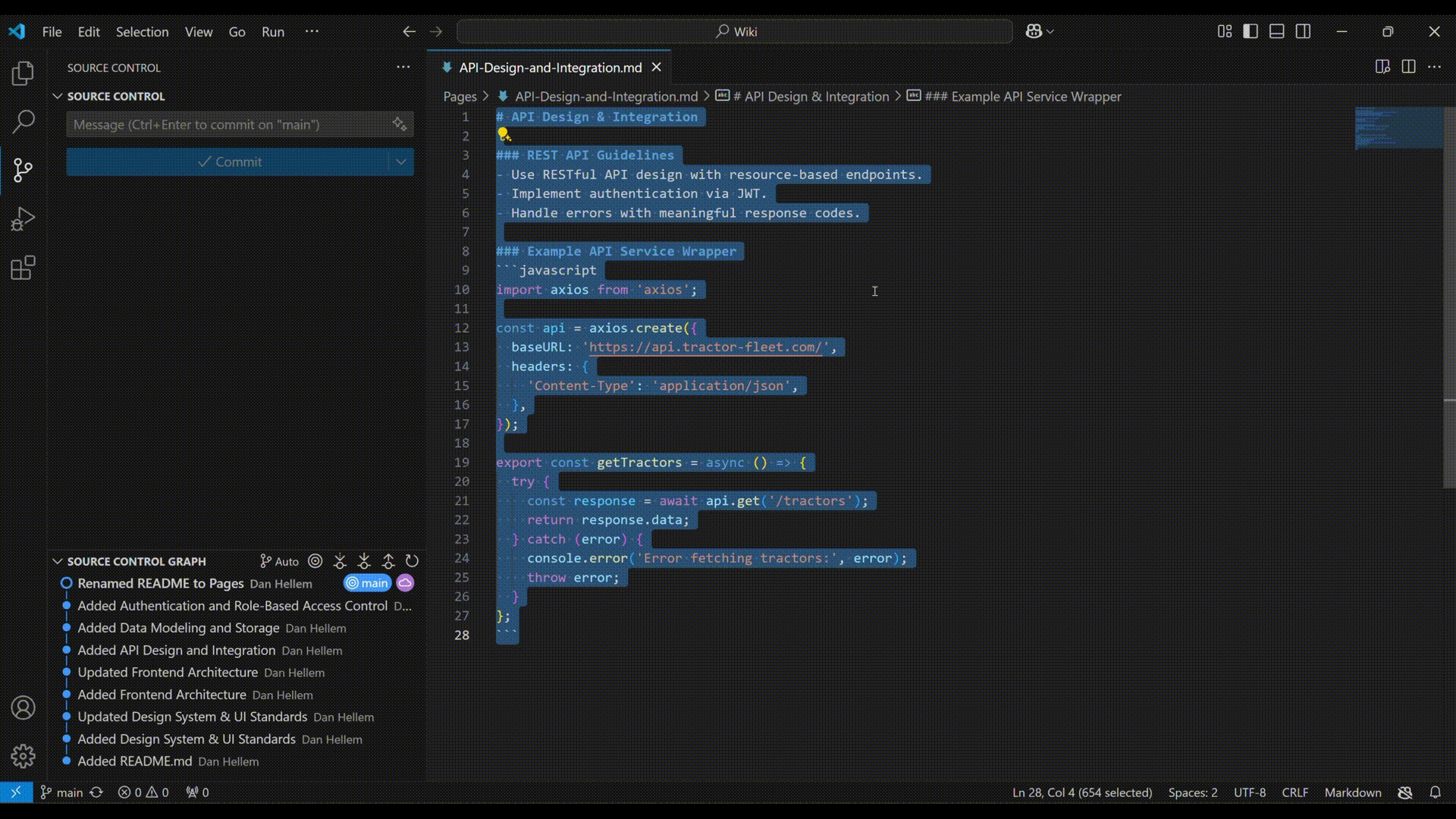Azure DevOps customers frequently ask us when GitHub Copilot will be available to them. What many don’t realize is that GitHub Copilot for Business is already accessible to all customers, including those using Azure DevOps. Even better, much of its powerful functionality is integrated into tools you already use, like Visual Studio and VS Code. In this post, we’ll share resources to help you get started with GitHub Copilot as an Azure DevOps customer and highlight some of the great features available in your IDE.
Getting started with GitHub Copilot is simple and opens the door to a more efficient coding experience. The Copilot Business is the most popular entry point for teams ready to accelerate their workflows with GitHub Copilot. To make the most of Copilot, follow our best practices like writing clear comments and descriptive function names to guide its AI-powered assistance.
Here are some links to get you started:
GitHub Copilot is included with the latest version of Visual Studio Code – no additional installations or extensions are required. In Visual Studio, however, you need to select a separate component or install the extension, depending on your version. Once it is installed, you’ll have access to features that make coding faster, easier, and just more fun. Copilot’s AI-powered code completions help you write code faster and avoid common mistakes. Got a question or stuck on a problem? The built-in chat feature acts like your coding assistant, offering tips and solutions right in your editor. It can even help with debugging, suggesting fixes tailored to your code. Need to start a new project? Copilot can generate boilerplate code and templates to get you rolling. Whether you’re iterating big changes across multiple files or generating documentation for your code, Copilot is there to make it all smoother.

Here are some links to dive into the different Copilot features:
If you’re using Azure DevOps, Copilot works seamlessly with Azure Repos, leveraging your current repository as context to improve code suggestions, autocompletions, and inline comments.
Beyond writing code, Copilot can also streamline your workflow by automating commit messages and generating pull request descriptions, saving time and ensuring clarity in your version history. With GitHub Copilot and Azure Repos, you get AI-driven coding assistance and automation without changing where you store your code, making development smoother and more efficient.

You can also use GitHub Copilot to generate and edit content for your Azure DevOps Wiki pages, making it easier to document best practices, guidelines, and technical references. For example, you can quickly generate REST API guidelines complete with code samples, ensuring consistency across your team. Additionally, Copilot can help streamline documentation by suggesting commit messages that summarize your changes with context-aware descriptions. This not only saves time but also improves clarity and collaboration across your team.

GitHub Copilot isn’t just about writing code faster, it’s also about helping you become a better engineer. If you’re new to Copilot or just want to level up your skills, here are some great resources to check out. For starters, Microsoft Learn has a handy module that walks you through the basics of using Copilot, so you can hit the ground running. Plus, there’s a guide on using Copilot Chat effectively to get the most out of its context-aware help. Whether it’s answering coding questions, refining your code, or understanding tricky concepts, these resources are a solid way to make Copilot work even better for you.
Happy coding 😁!









